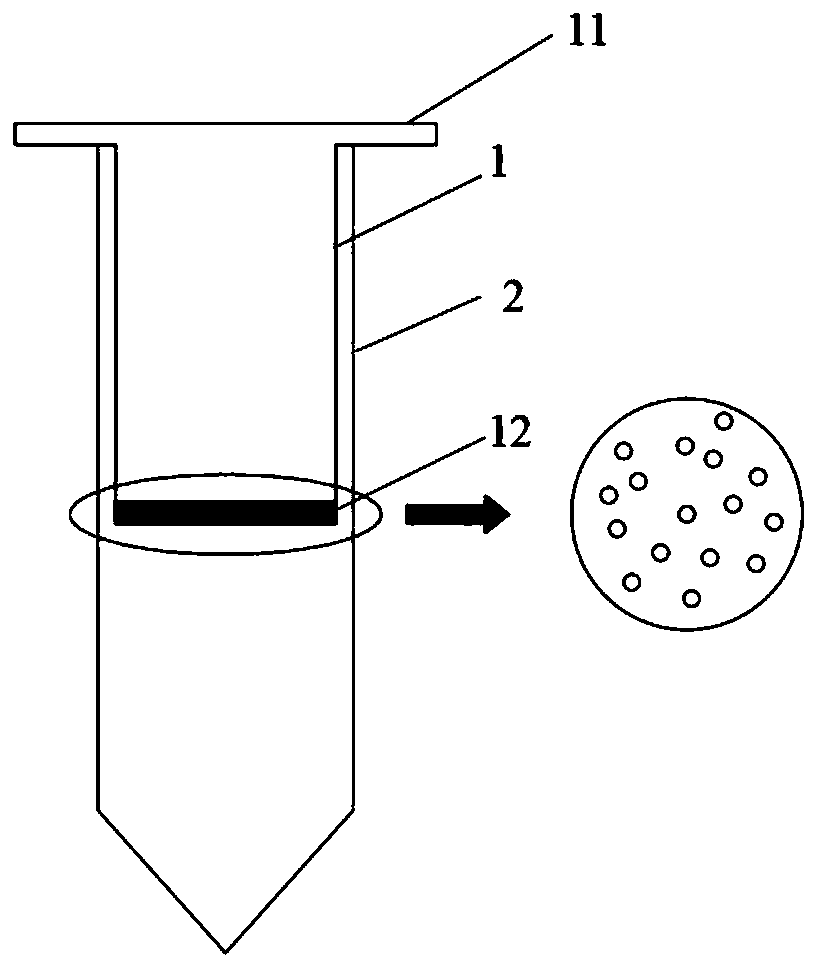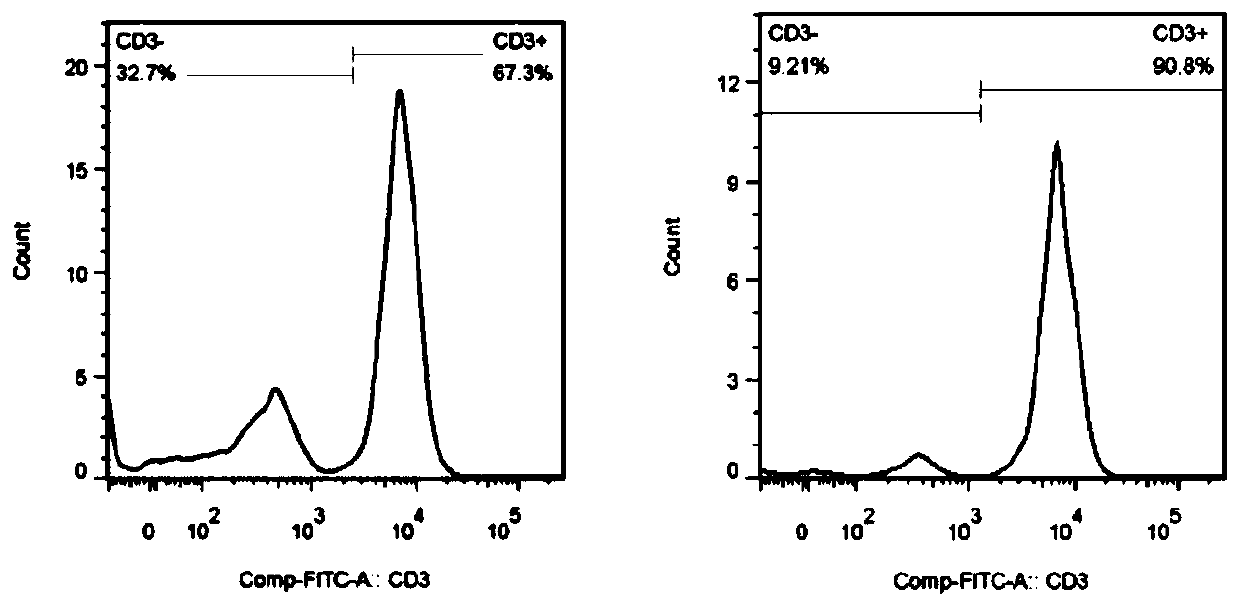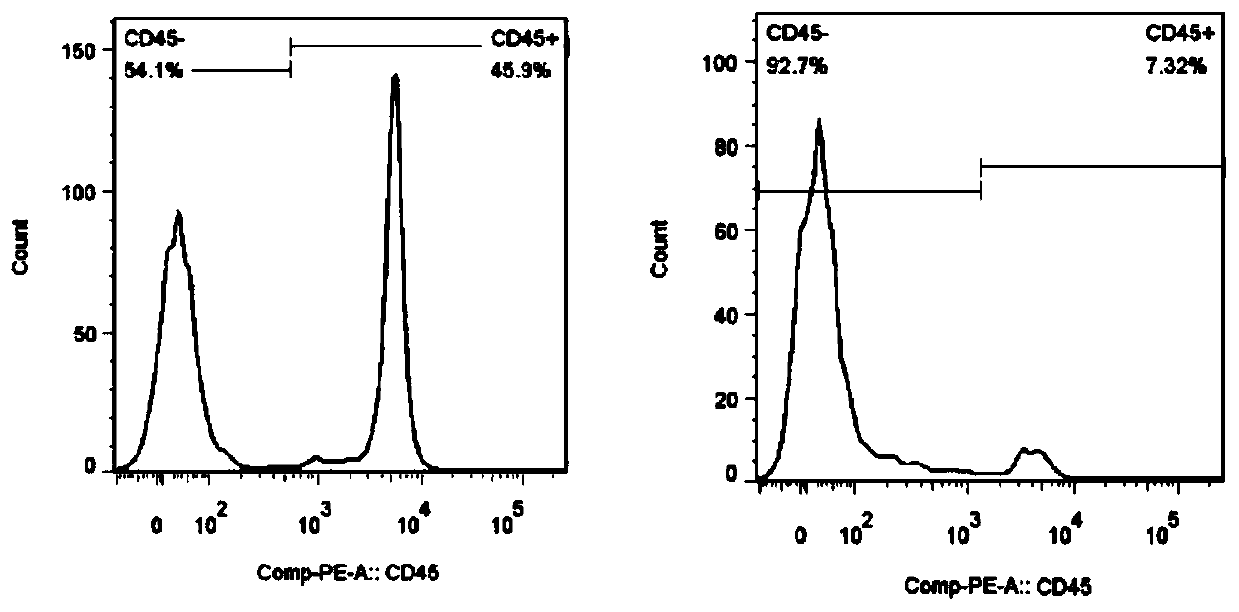Cell separation device and cell separation method
A separation device and cell technology, applied in the fields of clinical medicine and biological sciences, can solve the problems of poor cell separation effect, save sorting time, reduce difficulty, and achieve the effect of separation
- Summary
- Abstract
- Description
- Claims
- Application Information
AI Technical Summary
Problems solved by technology
Method used
Image
Examples
Embodiment 1
[0028] Enrichment of T lymphocytes (CD3+T) cells in peripheral blood mononuclear cells, including the following steps:
[0029] a. Peripheral blood mononuclear cells (PBMCs) in 50 ml of whole blood were separated by density gradient centrifugation, and the cell density was adjusted to 1×107 cells / ml with phosphate buffered saline (PBS) to make a single cell suspension of PBMCs;
[0030] b. Add FP001 immobilized with CD3 monoclonal antibody (anti-CD3mAb) (a modified polysaccharide, purchased from Nissan Chemical Industries, LTD, item number: 385-07981) and PBS solution into a 50ml cone at a ratio of 1:5. In a centrifuge tube, gently invert and mix evenly to prepare 20ml of solidified anti-CD3mAb three-dimensional antibody network solution;
[0031] c. Add the three-dimensional antibody network solution into the inner tube of the cell separation device, and at the same time add the separated PBMCs into the inner tube, gently invert and mix evenly, and incubate at room temperatur...
Embodiment 2
[0036] Depletion of CD45+ cells from peripheral blood mononuclear cells, including the following steps:
[0037] a. Peripheral blood mononuclear cells in 30ml of whole blood were separated by density gradient centrifugation, and the cell density was adjusted to 1×107 cells / ml with PBS solution;
[0038] b. Add FP001 and PBS solution immobilized with CD45 monoclonal antibody into a 50ml conical centrifuge tube at a ratio of 1:6, gently invert and mix evenly to prepare 15ml anti-CD45mAb three-dimensional antibody network solution;
[0039] c. Add the three-dimensional antibody network solution into the inner tube of the cell separation device, and at the same time add the separated PBMCs into the inner tube, gently invert and mix evenly, and incubate at room temperature for 20 minutes;
[0040] d. Centrifuge at 500g for 10 minutes, collect the cell pellet in the outer tube, which is the PBMCs after removing CD45+ cells;
[0041] e, flow cytometry analysis of CD45+ cell removal ...
Embodiment 3
[0042] Enrichment of circulating tumor cells in whole blood, comprising the following steps:
[0043] a. Draw 10ml of peripheral blood from tumor patients for anticoagulation with heparin;
[0044] b. Add the FP001 and PBS solution of solidified epithelial cell adhesion molecule monoclonal antibody (anti-EpCAM mAb) into a 50ml conical centrifuge tube at a ratio of 1:4, gently invert and mix well to prepare 30ml of solidified anti- EpCAM mAb three-dimensional antibody network solution;
[0045] c. Add the three-dimensional antibody network solution into the inner tube of the cell separation device, and at the same time add the separated PBMCs into the inner tube, gently invert and mix evenly, and incubate at room temperature for 20 minutes;
[0046] d. Centrifuge at a centrifugal force of 500g for 10 minutes, add 5ml of PBS to the inner tube to transfer the three-dimensional antibody network and cells trapped by the screen to another conical centrifuge tube;
[0047] e. Add m...
PUM
 Login to View More
Login to View More Abstract
Description
Claims
Application Information
 Login to View More
Login to View More - R&D
- Intellectual Property
- Life Sciences
- Materials
- Tech Scout
- Unparalleled Data Quality
- Higher Quality Content
- 60% Fewer Hallucinations
Browse by: Latest US Patents, China's latest patents, Technical Efficacy Thesaurus, Application Domain, Technology Topic, Popular Technical Reports.
© 2025 PatSnap. All rights reserved.Legal|Privacy policy|Modern Slavery Act Transparency Statement|Sitemap|About US| Contact US: help@patsnap.com



